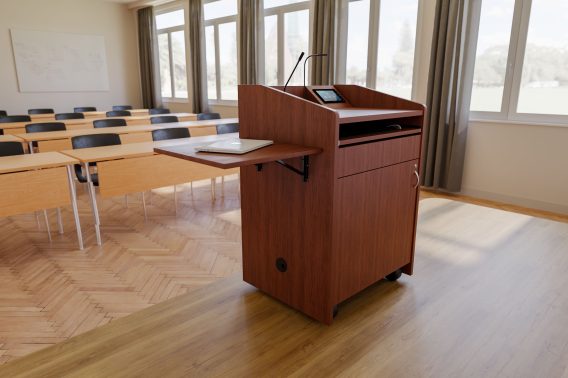At this point, many people are use to working remotely. If so, Zoom is our pick for best videoconferencing service. It’s not just us who love it. Zoom has seen millions of users in the last few months, as people shift to remote work during the coronavirus pandemic.
Zoom is easy to use, but you might not know some of the most important features. Many of these are hidden in advanced settings menus. Exact Furniture has been using Zoom every day for many years and has learned a few tricks. Even if you are only using the basic version, here’s how to get the best out of Zoom.
Make your face beautiful or hide it
You can check the Makeup my appearance box from Zoom’s video settings menu if you just got out of bed and are going straight into a meeting. It acts as a soft-focus lens. This blurs skin tones, smoothes wrinkles, blemishes and other imperfections.
Here’s a trick: You can take a Zoom picture of yourself at a Zoom meeting to use as your profile photo. This will ensure that you always look professional and you can appear attentive.
We think that no matter how well-put together you are, it is a smart idea to set Zoom so that your camera and microphone are disabled by default when you join meetings. Also, enable the option to see a preview of each meeting before you sign up. This will allow you to see any stains in your shirt and spinach in your teeth.
Show a different side
One of Zoom’s coolest, most underutilized features is its Virtual Backgrounds–basically green-screen technology for your boring office meetings.
This technology requires a powerful processor or a green screen. My 2019 MacBook Pro with Intel Core i5-powered Intel Core i5 processor doesn’t have enough processing power to enable Zoom to distinguish my face from the wall behind me. It works when it does, however, it is amazing.
You can prevent embarrassment by turning off desktop notifications
Windows 10 comes with a feature called Focus Assist which does exactly this. To toggle when I’m duplicating my display to on, go to Settings > Focus Assist. Or you can toggle it manually using the Action Center located at the bottom of the Windows 10 taskbar. To automate the process, Mac users will need to use a third-party application. Muzzle is our favorite. It simply switches on macOS’s Do Not Disturb Mode whenever screen sharing starts. The Muzzle website has hilarious examples of dating-app notifications and wince-inducing text messages you can block your colleagues seeing.
Screen sharing is more than PowerPoint presentations
Zoom’s screen sharing feature allows you to share your entire desktop and specific apps. Did you know that Zoom has a whiteboard built in? It’s great for communicating complex ideas and mapping out plans, but it’s also a fun way to play low-tech Friday afternoon games such as Hangman and Pictionary.
Hosts have the right to muffle attendees.
Zoom users are generally good at muting but large meetings can be difficult because there is often one person who forgets the mute button. This could lead to private conversations, baby crying, or worse.
Many hosts are unaware that they can mute these talkers. To make everyone join the meeting, toggle Mute participants at entry to Zoom’s account settings. You can also hit Manage participants to make sure that everyone is muted. Click the mic icon beside the person you wish to silence. This feature is one you will likely use more than you think, saving you and your colleagues embarrassment.
Although muted attendees can unmute themselves at any time, there are other options to prevent large meetings from becoming chaotic. To temporarily turn off your muted voice, press and hold the spacebar. Or you can open the Participants tab to the bottom of Zoom and hit Raise hand to be called by the moderator.
Zoom’s powerful scheduling features are available to you
Zoom’s built in scheduling function is compatible with iCal or Google Calendar. This makes it easy to organize meetings. You have the option to turn on video (for both participants and the host), to set audio sources, and to choose whether you want to use your Personal Meet ID (a number that is specific to your room) or a random room number.
Restrict unwanted guests from meetings
With huge numbers of workers and students moving to Zoom and other videoconferencing platforms during the COVID-19 epidemic, an unfortunate new trend has arisen in online meetings: “Zoombombing.” Think of it like photobombing–someone finds or guesses your meeting URL, jumps into your chat uninvited, and puts themselves on camera. To put it mildly, the results can be disturbing.
Zoom shared some helpful tips in a thread on Twitter. Here’s what you can do to stop this type of harassment as a host:
- Publicly share your meeting ID. Use a randomly generated meetingID (as explained here) instead.
- To ensure that you only chat with people you know, use the waiting area feature.
- Limit meetings to only those who are logged into Zoom. You can limit the number of people in your meeting who use an email address from a specific domain, such as your school or company’s.
- Stop attendees from sharing screen without your permission.
- Lock meetings have been in place to stop new people joining the stream.
If someone acts out despite following these tips, hosts have the ability to mute them and can kick them out at any moment.
Last but not least, please mutes yourself
Your host can help you but be responsible and don’t press the mute button when it’s your turn. This will save you embarrassment and everyone else won’t hear about your salad.





